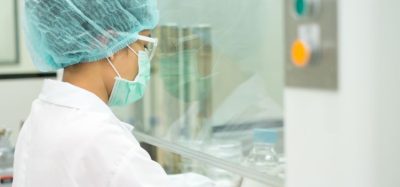The race to get biotech innovation to market: five steps to success
Posted: 3 November 2021 | Jean-Luc Taborin (ProductLife Consulting) | No comments yet
Achieving prompt and profitable market access for new pharma products has never been more challenging. Next-generation drug launches are increasing in number year on year, creating strong competition, and treatments are becoming more tightly targeted, reducing the size of available markets. In addition, biologic drugs are highly complex and expensive to research and develop – costs which must be justified in patient benefits. Here, Jean-Luc Taborin of ProductLife Consulting offers a five-step plan to help biotechs and biopharma companies cut through the market complexities and deliver transformative and commercially viable treatments to patients without delay.


Around the world the biopharma sector is booming, with new products emerging at an accelerating pace. Many of these are being developed by biotechnology companies, which must compete with more established pharmaceutical companies for market access and the best pricing and reimbursement terms, despite limited resources.
This is by no means easy. Compared to traditional blockbuster drugs, next-generation treatments are much more tightly targeted, resulting in a smaller overall market opportunity. Biopharma products, being both novel and complex, also require deeply involved research, making them more expensive – costs that must be justified in patient benefits.
To optimise market access potential and commercial terms, contenders will need a robust and relevant strategy in place. This is especially true for Europe which – in spite of immense opportunity – is a highly diverse and complex region to penetrate.
Success requires expert planning
1. A fit-for-purpose market access strategy
As blockbuster drug development gives way to more targeted and personalised medicines involving living cells and genes, the parameters involved in assessing, vetting and commercialising these products will inevitably bear little resemblance to those used to review traditional pharmaceuticals.
Carrying out a finely-tuned pharmacoeconomic impact study on the community and communicating the benefits of innovative new therapies and treatments to the authorities, the different commissions, payers/insurers and potential financial backers, needs specific expertise. When seeking help with devising and executing the optimum market access strategy, it is important that such support is tailored to the particular company and its area of focus, to maximise success and secure the best pricing and reimbursement terms.
This will involve understanding which countries to target first for the particular treatment, and what it will take to get a dossier to the top of a fast-growing pile within a particular authority so that it is investigated as a priority.
2. A joined-up strategy for registration and market access
The process of applying for marketing authorisation for a new product inevitably involves collating a lot of valuable detail, so it makes sense that this activity should seamlessly feed into the market access strategy, processes and content. Aligning the two streams of activity and working on them in parallel rather than sequentially will focus thinking, strengthen the narrative, accelerate progress and save duplication of effort.
3. A core dossier which serves 80 percent of all market needs
Although European market access will ultimately be approached by country, successful attack will combine a blend of central, regional know-how/preparation and local application. I propose devising a core set of benefits and a core dossier, with around 80 percent of agreed messaging and content which will be the same for all markets. This can be developed in parallel with marketing authorisation preparations, ensuring close alignment and optimal potential for resource and content sharing.
4. A strong initial target market, based on maximum opportunity
With the most critical building blocks in place, commercial strategy teams can start to build out the market access dossier for the primary target market – in other words, the country identified as having the best potential for optimal pricing/reimbursement for the particular product.
A knowledgeable partner will be able to help pinpoint this based on:
- The size of the given market, in particular its target population of patients with the particular condition/demand for the new treatment;
- The attitude of the local authority towards innovative treatments, and any policies or ‘fast-track’ processes designed to accelerate market access and/or more generously compensate drug developers;
- Current competition – what is already in the market, what room there is for a new entrant; and
- The biopharma company’s existing activity or relationships (affiliates/partners) in that market, including any plans to manufacture the product locally.
5. A powerful template dossier using this target country as the model
With the core 80 percent of the dossier already developed, the final finessing can be done with the primary market in mind, drawing on local knowledge of that country and the particular priorities and preferences of the local authority’s key decision-makers. A service partner with local in-country expertise as well as central regional knowledge will be well placed to find that sweet spot between general appeal and applicability and targeted messaging for each specific market.
Once the dossier has been completed and approved for the preferred/primary country, it can serve as a template for other markets – minimising the amount of rework each time. Again, local experts will be able to help adapt the final 20 percent of input that is market specific, boosting the chance of success in accessing each country with the most beneficial terms.
Final thoughts
Local market knowledge and connections are essential to remove potential blocking points, smoothing the way and ensuring that dossiers have a strong narrative that clearly ‘sells’ the unique benefits of each proposed new treatment, in the terms that matter most to that population and its overseeing authority.
Yet, even so, the path to market access may not be straightforward, particularly if this is dependent on the outcome of ongoing clinical studies or if dossiers are especially complex.
The right strategy and approach, tailored to the needs of biopharma – and which treats regulatory/registration and market-access requirements holistically – could be critical in obviating regional market complexity, and in streamlining the delivery of vital new treatments to where they are most needed.
About the author
Jean-Luc Taborin is Vice President, Head of ProductLife Consulting. A veteran of life sciences, Jean-Luc has worked for Ernst & Young (EY), Sanofi, Eurofins, Deloitte and Roland Berger over the last three decades. ProductLife Consulting provides full lifecycle consulting services to life sciences organisations worldwide, spanning market regulatory, clinical trials, market access, go-to-market, and development/partnership strategy. Jean-Luc is contactable at: [email protected]
Related topics
Biologics, Biopharmaceuticals, Drug Development, Drug Markets, Research & Development (R&D), Therapeutics









